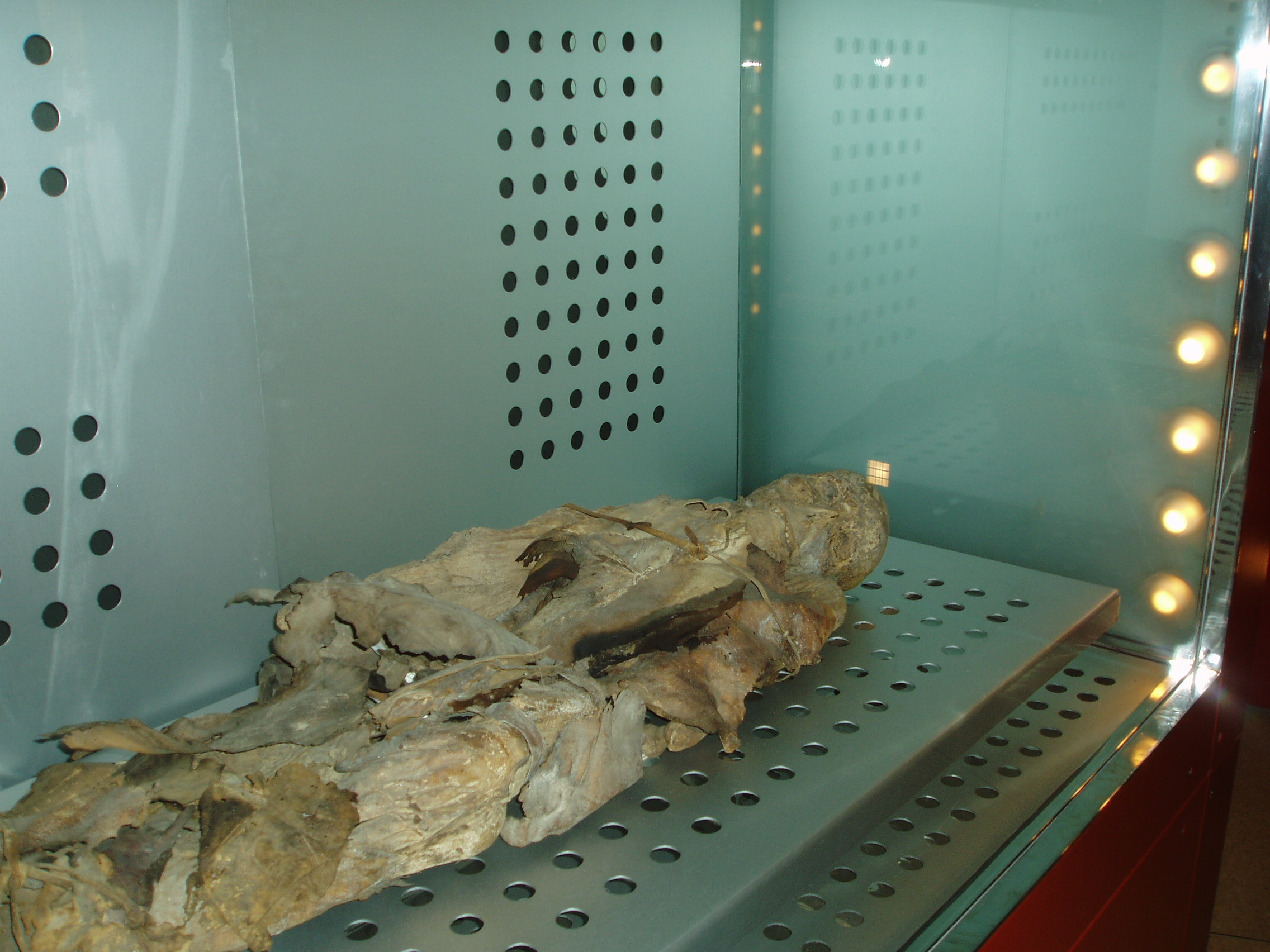Mummy Of San Andrés on:
[Wikipedia]
[Google]
[Amazon]
 The Mummy of San Andrés is a human
The Mummy of San Andrés is a human
 * Gender: male.
* Age: 25 to 30 years or so.
* Culture: Guanche.
* Type of mummification: mummy ceremonial.
* Type of burial: burial cave.
* Location: Anaga (Tenerife).
* Shown at: The Museum of Nature and Man (Santa Cruz de Tenerife), along with other Guanche mummies preserved.
* Interesting facts: Found on a wooden board (now this plate not displayed to the public).
* Gender: male.
* Age: 25 to 30 years or so.
* Culture: Guanche.
* Type of mummification: mummy ceremonial.
* Type of burial: burial cave.
* Location: Anaga (Tenerife).
* Shown at: The Museum of Nature and Man (Santa Cruz de Tenerife), along with other Guanche mummies preserved.
* Interesting facts: Found on a wooden board (now this plate not displayed to the public).
The mystery of the guanche mummies (in Spanish)
{{DEFAULTSORT:Mummy of San Andres Guanche mummies Guanche people Archaeological discoveries in Spain
 The Mummy of San Andrés is a human
The Mummy of San Andrés is a human mummy
A mummy is a dead human or an animal whose soft tissues and Organ (biology), organs have been preserved by either intentional or accidental exposure to Chemical substance, chemicals, extreme cold, very low humidity, or lack of air, so that the ...
belonging to the Guanche Guanche may refer to:
*Guanches, the indigenous people of the Canary Islands
*Guanche language, an extinct language, spoken by the Guanches until the 16th or 17th century
*''Conus guanche
''Conus guanche'' is a species of sea snail, a marine ga ...
culture, who were the ancient inhabitants of the Canary Islands
The Canary Islands (; ) or Canaries are an archipelago in the Atlantic Ocean and the southernmost Autonomous communities of Spain, Autonomous Community of Spain. They are located in the northwest of Africa, with the closest point to the cont ...
, Spain
Spain, or the Kingdom of Spain, is a country in Southern Europe, Southern and Western Europe with territories in North Africa. Featuring the Punta de Tarifa, southernmost point of continental Europe, it is the largest country in Southern Eur ...
.
It is one of the best preserved Guanche mummies, and is one of the few that has a proper name, ''Mummy of San Andrés''. The appellation refers to the place where the male specimen was discovered, similar to how the mummies of the swamps in northern Europe
Europe is a continent located entirely in the Northern Hemisphere and mostly in the Eastern Hemisphere. It is bordered by the Arctic Ocean to the north, the Atlantic Ocean to the west, the Mediterranean Sea to the south, and Asia to the east ...
were named after local toponyms (Lindow Man
Lindow Man, also known as Lindow II and (in jest) as Pete Marsh, is the preserved bog body of a man discovered in a peat bog at Lindow Moss near Wilmslow in Cheshire, North West England. The remains were found on 1 August 1984 by commercia ...
, Grauballe Man
The Grauballe Man is a bog body that was uncovered in 1952 from a peat bog near the village of Grauballe in Jutland, Denmark. The body is that of a man dating from the late 3rd century BC, during the early Germanic Iron Age. Based on the evidenc ...
and Tollund Man, among others).Background
The mummy is a male of about 25 to 30 years partially covered with goatskin with 6 strips that surround it. It was found in a cave in a ravine outside the village of San Andrés. The mummy was found in the Anaga massif, an area on the island ofTenerife
Tenerife ( ; ; formerly spelled ''Teneriffe'') is the largest and most populous island of the Canary Islands, an Autonomous communities of Spain, autonomous community of Spain. With a land area of and a population of 965,575 inhabitants as of A ...
that is rich in archaeological
Archaeology or archeology is the study of human activity through the recovery and analysis of material culture. The archaeological record consists of Artifact (archaeology), artifacts, architecture, biofact (archaeology), biofacts or ecofacts, ...
finds. It is thought that the mummy might have been that of a Mencey
The Guanche were the Indigenous peoples, indigenous inhabitants of the Spain, Spanish Canary Islands, located in the Atlantic Ocean some to the west of modern Morocco and the North African coast. The islanders spoke the Guanche language, which i ...
(aboriginal king), or a leading figure in Guanche society of the time.
The exact year of the mummy's discovery is unknown. The specimen was kept at the Museo Municipal of Santa Cruz de Tenerife until 1958, when the mummy became part of the collections of the Museum of Nature and Man (Museo de la Naturaleza y el Hombre Museo may refer to:
*Museum (2018 film), ''Museum'' (2018 film), Mexican drama heist film
*Museo station, station on line 1 of the Naples Metro
{{disambiguation ...
) of Santa Cruz de Tenerife
Santa Cruz de Tenerife (; locally ), commonly abbreviated as Santa Cruz, is a city, the capital of the island of Tenerife, Province of Santa Cruz de Tenerife, and one of the capitals of the Canary Islands, along with Las Palmas. Santa Cruz has a ...
, where it currently is. It is considered the best Guanche mummy preserved in the museum, and the most representative.
Data on the mummy
See also
* Guanche mummies of NecocheaReferences
The mystery of the guanche mummies (in Spanish)
{{DEFAULTSORT:Mummy of San Andres Guanche mummies Guanche people Archaeological discoveries in Spain